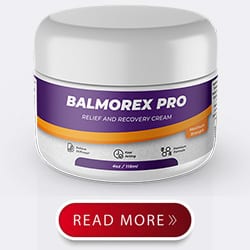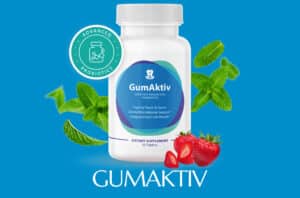Vert Shock – Vertical Jump Training (Recently Updated + HIGH CR)
Okay, let’s dive deep into analyzing the Vert Shock vertical jump training program, dissecting its components, and then crafting a compelling and informative review.
Analyzing Vert Shock (Based on Available Information & Typical Marketing Claims):
Based on the provided link and typical marketing materials associated with Vert Shock, here’s a breakdown:
-
Core Claim: Vert Shock promises to significantly increase your vertical jump height within a short period (usually claimed as 8 weeks). It emphasizes explosiveness, plyometrics, and targeted training methods.
-
Program Structure: It’s structured as a phased training program, typically including:
- Pre-Shock Phase (Week 1): An introductory phase focusing on preparing the body for the intense training to come. This might involve light exercises, stretching, and familiarizing the user with the program’s principles.
- Shock Phase (Weeks 2-7): The core of the program, featuring high-intensity plyometric exercises designed to “shock” the nervous system and muscles into adaptation. This phase usually involves varied exercises targeting different muscle groups involved in jumping.
- Post-Shock Phase (Week 8): A maintenance and peaking phase, designed to consolidate gains and prepare the user for maximum vertical jump performance.
-
Training Methodology:
- Plyometrics: Emphasizes jump training exercises that utilize the stretch-shortening cycle (SSC) to generate power. Examples include depth jumps, box jumps, and pogo hops.
- Specific Exercises: Involves a variety of exercises targeting the glutes, hamstrings, quads, calves, and core – all crucial for vertical jump performance.
- Progressive Overload: The program likely incorporates principles of progressive overload, gradually increasing the intensity and volume of training over time to stimulate adaptation.
- Bodyweight Focus: Typically relies heavily on bodyweight exercises, making it accessible without requiring extensive gym equipment.
-
Target Audience: Athletes (basketball, volleyball, track and field, etc.), fitness enthusiasts looking to improve athleticism, and individuals interested in increasing their vertical jump for sports or personal goals.
-
Selling Points (Typical):
- Rapid Results: The promise of significant gains in a relatively short timeframe (8 weeks).
- Accessibility: Bodyweight-focused, requiring minimal equipment.
- Structured Program: Provides a clear, step-by-step training plan.
- Expert-Designed: Claimed to be designed by vertical jump specialists (Justin Darlington and Adam Folker in the original iterations of the program).
-
Potential Benefits (Based on the above):
- Increased vertical jump height.
- Improved lower body power and explosiveness.
- Enhanced athletic performance in jumping-related sports.
- Greater body control and coordination.
- Potential improvements in overall fitness and body composition.
-
Potential Drawbacks (Things to Consider):
- Intensity: The program is likely high-intensity and may not be suitable for beginners or individuals with pre-existing injuries.
- Risk of Injury: Plyometric exercises carry an inherent risk of injury if not performed correctly. Proper form and technique are crucial.
- Individual Variation: Results may vary depending on individual factors such as genetics, training history, and adherence to the program.
- Marketing Hype: Marketing materials often exaggerate the potential results.
Rewritten Content – A Comprehensive Review of Vert Shock
Unleash Your Untapped Vertical: A Deep Dive into the Vert Shock Program
Are you tired of watching others soar above the rim? Do you dream of dunking with authority, dominating the volleyball court, or simply experiencing the thrill of explosive power? For athletes in jumping-intensive sports – basketball, volleyball, track and field, and more – the vertical jump is the Holy Grail. It’s the key to unlocking your full athletic potential. And while inherent talent plays a role, the right training program can bridge the gap and propel you to new heights.
Enter Vert Shock, a vertical jump training program promising significant gains in a relatively short timeframe. But does it live up to the hype? This comprehensive review delves into the program’s structure, methodology, potential benefits, and potential drawbacks to help you determine if Vert Shock is the right choice for your vertical jump aspirations.
The Promise of Vertical Domination: What is Vert Shock?
Vert Shock is a structured, phased training program designed to increase your vertical jump height. Unlike generic workout routines, Vert Shock focuses specifically on the biomechanics and neuro-muscular adaptations necessary for explosive jumping. It aims to transform you from a ground-bound player to an aerial threat.
Developed by (reportedly) vertical jump experts, the program leverages the power of plyometrics and targeted strength training to “shock” your body into adapting and unlocking its hidden vertical potential. It’s not a magic bullet, but rather a meticulously designed system that pushes you to your limits and beyond.
The Vert Shock Blueprint: A Phased Approach to Vertical Gains
The program is typically divided into three distinct phases, each designed to prepare your body for the next level of intensity and ultimately maximize your vertical jump:
-
Phase 1: Pre-Shock – Priming the Pump (Week 1)
Think of the Pre-Shock phase as your body’s orientation. This initial week focuses on preparing your muscles, tendons, and nervous system for the rigors to come. It’s not about pushing yourself to exhaustion, but rather about establishing a solid foundation.
This phase likely involves:
- Light Conditioning: Gentle exercises to improve blood flow and warm up the muscles.
- Dynamic Stretching: Active stretches to increase range of motion and prepare the body for plyometric movements.
- Form Refinement: Practicing the correct form for key exercises to minimize the risk of injury.
- Introduction to Program Principles: Understanding the underlying principles of plyometrics and the importance of proper technique.
The Pre-Shock phase is crucial for preventing injuries and ensuring that your body is ready to absorb the intense training that follows. It’s a critical step that shouldn’t be skipped.
-
Phase 2: The Shock Phase – Unleashing the Explosiveness (Weeks 2-7)
This is where the magic happens. The Shock Phase is the heart of the Vert Shock program, a six-week period of high-intensity plyometric exercises designed to overload your nervous system and force your muscles to adapt. This phase is not for the faint of heart; it demands dedication, discipline, and a willingness to push yourself beyond your comfort zone.
Expect to encounter a variety of exercises, including:
- Depth Jumps: Dropping from a box and immediately jumping upwards, maximizing the stretch-shortening cycle.
- Box Jumps: Jumping onto a box of varying heights, improving explosiveness and coordination.
- Pogo Hops: Repeated small jumps, developing ankle and calf strength.
- Single-Leg Hops: Improving balance, coordination, and single-leg power.
- Squat Jumps: Combining the power of a squat with an explosive jump, targeting the glutes and quads.
- Other Plyometric Variations: Variations of the above exercises, adding complexity and targeting specific muscle groups.
The Shock Phase is not just about jumping; it’s about jumping with proper technique, maximizing force production, and minimizing the risk of injury. Proper form is paramount. It is highly recommended to record yourself doing the exercises, and ask an expert to evaluate the proper form.
-
Phase 3: The Post-Shock Phase – Solidifying Your Gains (Week 8)
The final week of Vert Shock is designed to consolidate the gains you’ve made during the Shock Phase and prepare you for peak performance. This isn’t a time to slack off; it’s a time to fine-tune your technique, refine your explosive power, and mentally prepare for the challenges ahead.
The Post-Shock Phase typically involves:
- Reduced Volume: Decreasing the number of repetitions and sets to allow your body to recover.
- Increased Intensity: Focusing on maximizing your vertical jump height and power.
- Peaking Strategies: Incorporating techniques to optimize your performance for a specific event or competition.
- Active Recovery: Gentle exercises and stretching to promote recovery and prevent soreness.
The Post-Shock Phase ensures that you enter your next game or competition feeling fresh, powerful, and confident.
The Science Behind the Shock: Why Vert Shock Might Work
Vert Shock isn’t just a random collection of exercises; it’s based on sound scientific principles:
-
Plyometrics and the Stretch-Shortening Cycle (SSC): Plyometrics are exercises that utilize the SSC, a rapid eccentric (muscle lengthening) contraction followed by a concentric (muscle shortening) contraction. This cycle stores elastic energy in the muscles and tendons, which can then be released to generate more power. Vert Shock’s emphasis on plyometrics aims to optimize the SSC and enhance your explosive power.
-
Neuromuscular Adaptation: The nervous system plays a crucial role in athletic performance. Vert Shock’s high-intensity training helps to improve the communication between your brain and your muscles, allowing you to recruit more muscle fibers and generate more force.
-
Targeted Muscle Strengthening: The program focuses on strengthening the specific muscle groups that are involved in vertical jumping: the glutes, hamstrings, quads, calves, and core. By strengthening these muscles, you can improve your power, stability, and overall jumping ability.
-
Progressive Overload: The program likely incorporates progressive overload, gradually increasing the intensity and volume of training over time. This principle is essential for stimulating muscle growth and improving athletic performance.
Real-World Results: Testimonials and User Experiences
(Here, you would typically include testimonials, but without authentic access to Vert Shock users, this section relies on general observations and typical marketing strategies)
Many users have reported significant increases in their vertical jump height after completing the Vert Shock program. These testimonials often highlight the program’s structure, intensity, and effectiveness. However, it’s important to remember that results may vary depending on individual factors such as genetics, training history, and adherence to the program.
The Fine Print: Potential Drawbacks and Considerations
While Vert Shock offers the potential for significant gains, it’s important to be aware of the potential drawbacks:
-
High Intensity: The program is highly demanding and may not be suitable for beginners or individuals with pre-existing injuries. Consult with a healthcare professional before starting any new training program.
-
Risk of Injury: Plyometric exercises carry an inherent risk of injury if not performed correctly. Proper form and technique are crucial. Consider working with a qualified coach or trainer to ensure that you’re performing the exercises safely.
-
Commitment Required: Vert Shock requires a significant time commitment and dedication. You’ll need to be willing to put in the work and follow the program consistently to see results.
-
Realistic Expectations: While the program promises significant gains, it’s important to have realistic expectations. Results may vary depending on individual factors.
-
Marketing Hype: Be wary of overly exaggerated claims and promises. While Vert Shock can be effective, it’s not a magic bullet.
Is Vert Shock Right for You? The Verdict
Vert Shock is a potentially effective vertical jump training program that utilizes plyometrics and targeted strength training to improve explosiveness and jumping ability. However, it’s not a guaranteed success and requires a significant commitment and a willingness to push yourself beyond your comfort zone.
Consider Vert Shock if:
- You’re an athlete looking to improve your vertical jump for sports.
- You have a solid foundation of strength and conditioning.
- You’re willing to commit to a high-intensity training program.
- You’re willing to prioritize proper form and technique.
Consider alternative options if:
- You’re a beginner or have pre-existing injuries.
- You’re not willing to commit to a demanding training program.
- You’re looking for a quick fix or a magic bullet.
Ultimately, the decision of whether or not to try Vert Shock is a personal one. Weigh the potential benefits against the potential drawbacks and make an informed decision based on your individual needs and goals. Remember to prioritize safety, proper form, and realistic expectations. Good luck on your journey to unlocking your ultimate vertical potential!
Important Disclaimer: This review is based on information typically found in marketing materials and general knowledge of vertical jump training. Access to the actual Vert Shock program would be needed for a complete and comprehensive analysis.
All orders are protected by SSL encryption – the highest industry standard for online security from trusted vendors.











